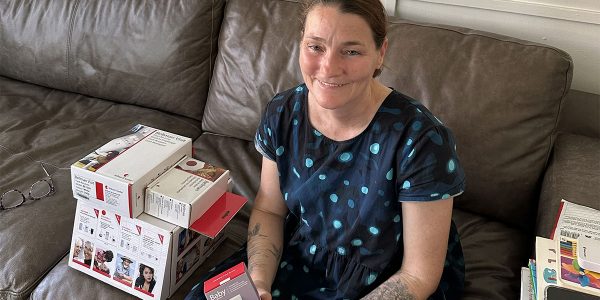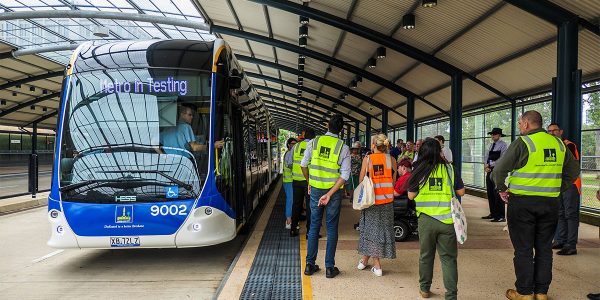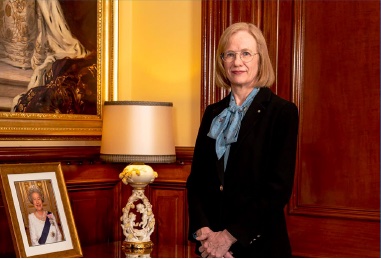Smoke Alarm Regulations Pose Challenge for People with Hearing Loss

With new smoke detector regulations being introduced, where do people who are Deaf and hard of hearing stand?
In 2017, new legislation was introduced in Queensland regarding the requirements for smoke alarms in all Queensland homes. The new requirements have been rolled out in three stages to allow homeowners to plan and budget for the new rules.
From 1 January 2017, all new homes and those undergoing substantial renovation have had to comply with the new legislation. Rental dwellings and dwellings being sold have all had to comply from 1 January 2022.
All dwellings in Queensland need to meet the new requirements by 1 January 2027.
What are the new smoke detector requirements?
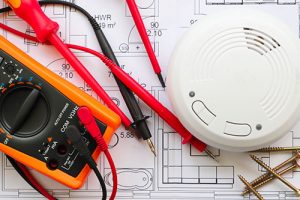
New legislation stipulates where smoke detectors are required in Queensland homes.
In short, the changes require all smoke alarms in a home to be photoelectric, powered by an enduring power source and, importantly, interconnected so that when one activates, they all sound.
Smoke alarms in the dwelling must:
- be photoelectric (AS3786-2014); and
- not also contain an ionisation sensor; and
- be hardwired to the mains power supply with a secondary power source (i.e., battery) or powered by a 10-year non-removable battery*; and
- be interconnected with every other required smoke alarm in the dwelling so all activate together.
*Existing hard-wired alarms that need replacing must be replaced with hard-wired alarms.
The legislation requires smoke alarms to be installed on each storey of the dwelling in the following locations:
- in each bedroom; and
- in hallways that connect bedrooms and the rest of the dwelling; and
- if there is no hallway between the bedroom and other parts of the storey; and
- if there are no bedrooms on a storey, at least one smoke alarm must be installed in the most likely path of travel to exit the dwelling.
You can read the specifics of the requirements on the Queensland Fire and Emergency Services website.
These requirements apply to all new dwellings, dwellings being built or renovated, and rental properties, including houses, townhouses, units, and flats.
We spoke with Acting Inspector Andrew Madden from QFES, who offered the following statement: “Interconnected smoke alarms provide the earliest possible warning of fire to all occupants, which allows valuable time to safely escape in the event of an emergency. QFES strongly recommends all dwelling owners ensure their smoke alarms meet the current regulatory compliance and that they test and clean their smoke alarms regularly to ensure the alarms remain in good working order. Questions in relation to smoke alarm compliance can be sent via email to smokealarms@qfes.qld.gov.au.”
The challenge for people who are Deaf and Hard of Hearing
The new regulations have been designed to ensure adequate coverage in all situations, and the interconnected requirements of the installation will certainly help people be alerted faster when smoke is detected in other parts of the home.
The challenge for people with hearing loss, for whom an audible alarm is insufficient, is ensuring the assistive listening devices they rely on actually work with the systems being installed to meet the new regulations.
From our research, this appears to be a big challenge due to issues of compatibility and cost.
What are the current options for Deaf and hard of hearing people requiring a whole-house solution for smoke detection?
There are several manufacturers who specialise in alarm and alerting systems for those with hearing loss.

The Bellman Smoke Detector Pack includes a smoke detector, flashing alert and a vibrating bed pad.
Bellman produces the Visit Smoke Alarm Pack, which consists of a Bellman Visit Smoke Detector, a Bellman Bed Shaker and a Bellman Visit Flash Receiver.
Brooks is another company that makes smoke detectors and alerting systems. Their High-Intensity Strobe with Vibration Pad and Photoelectric RadioLINK™ Smoke Alarm with AudioLINK™ Kit also includes a smoke detector, flashing alert and vibrating bed pad.
In both cases, if the smoke detector is triggered, it will cause the flashing alert to light and cause the bed shaker or vibrating pad to start vibrating, as well as the usual high-volume alert from the detector.
These systems give those with hearing loss two additional methods of being alerted to smoke in their home, other than just an audible alarm.
Subsidies for people who are Deaf and hard of hearing
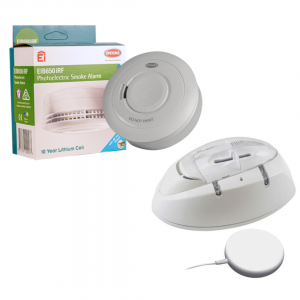
The Brooks Smoke Detector and Alarm pack is subsidised by the Queensland Government for people who are Deaf or Hard of Hearing.
We are lucky that in Queensland there is a subsidy available from the Queensland Fire and Emergency Service (QFES) for specialised smoke alarms for Deaf and hard of hearing people. It is managed by Deaf Connect and is called the Smoke Alarm Subsidy Scheme (SASS).
The total price for a Brooks Smoke Alarm Kit as mentioned above is $754.60. However, with the subsidy, it is available to eligible community members for just $50, or $20 with a Concession Card. That price includes one (1) smoke alarm detector.
Subsidy eligibility
To be eligible for the subsidy, you must be Deaf or hard of hearing and you must provide evidence of ONE of the following:
- A copy of your last audiogram with a loss above the required threshold; or
- Confirm that you are on the Disability Support Pension due to your hearing loss, or
- Confirm that you are a member of the signing Deaf community (you may require a witness).
The problem with the subsidised smoke detector pack
There is however, a glaring problem with the subsidised pack. While we commend the State Government for providing the subsidy, the pack that is subsidised doesn’t necessarily enable Deaf and hard of hearing residents to meet the requirements of the new smoke alarm legislation.
Only one smoke detector is supplied in the pack, and in order to cover a dwelling, as required by the regulations, you would need more than one detector.
The detectors on their own cost over $200 and these detectors are not compatible with any other installed or available detector from another manufacturer.
We spoke to the Australian wholesaler of the Bellman devices who confirmed that Bellman devices were only compatible with each other, and they know of no other brands that are potentially connectable with a different brand of device.
This means there is no way to utilise existing detectors in a dwelling, as your subsidised smoke detector pack will be incompatible with the detectors already installed.
Smoke detector solutions for renters and homeowners
There is no easy solution.
As we get closer to 2027 and the requirement for owner occupiers to meet the regulations, homeowners with hearing loss will need to consider installing interconnected alerting systems throughout the dwelling compatible with any additional assistive listening/alerting system they need to get the best protection possible.
Renters with hearing loss and smoke detectors
For tenanted dwellings, the situation is complicated.
Landlords are covered for their requirements if they have installed a compliant smoke alarm system as per the regulations but are not required by law to install additional devices for Deaf or hard-of-hearing tenants.
Tenants can install additional devices to supplement the required smoke alarms but should contact their landlord or rental agent prior to doing so. Owners must regularly test and clean all smoke alarms in a dwelling, whether they are required smoke alarms or not. This means that installing an additional smoke alarm places an additional responsibility on the landlord.
The smoke alarms supplied by the subsidy program are only battery-powered and don’t need to be hard-wired. They can be affixed to the ceiling temporarily with double-sided tape products made for this purpose.
Existing homeowners
For Deaf and hard of hearing people living in their own homes and needing to meet the requirements by 2027, the most practical solution would be to install compatible detectors throughout the home.
But even if you can get the subsidy for the main alerting pack, you will still be required to pay full price for any additional detectors needed to ensure interconnection with your alerting pack.
This means a single-level 3-bedroom house with a hallway will need at least an additional $600 worth of detectors if not more.
The more bedrooms, levels, and hallways you have, the more detectors you will need.
If you are not eligible for the subsidy, your costs for the system and the detectors would be anywhere from $1,400 to $1,900, depending on brand and supplier, not including installation if required.
A five-pack of detectors meeting the standard requirements of the Queensland legislation can be had by any other existing homeowner for around $400.
That’s a big difference.
People building or renovating
The challenge here is the National Construction Code requires hard-wired smoke alarms in all new builds and substantial renovations.
The solution currently available under the SASS is not a hard-wired solution.
This means if you build a new home or renovate your existing one, you will need to install a hard-wired system that is compatible with your subsidised hard-of-hearing alerting system. If you want whole-house coverage, you will need to source and pay full price for a solution that a) meets the legislative requirements for a hard-wired system and b) works with the alerting system required for your hearing needs.
Deaf and Hard of Hearing people need equal access to fire safety
Smoke alarms are an essential safety feature for everyone, and it’s important to ensure they are working properly and that everyone in the household can be alerted in case of an emergency.
Currently, the costs to meet Queensland’s requirements for interconnected smoke detectors can be prohibitive for many people with hearing loss, even if we factor in the SASS.
We will be urging the State Government to review the Smoke Alarm Subsidy Scheme to ensure people with hearing loss can protect their homes and sleep safely for the same costs as others.
What we would like the government to do
Solution 1 – Legislate for compatibility
Governments should move to push manufacturers to adopt a single national interconnectivity standard for all smoke detectors and incorporate that into the Australian Standards.
This should include manufacturers of devices specifically for the Deaf and hard of hearing. This would allow people to purchase interconnectable devices as required from any brand or link the starter pack device to pre-installed detectors in rental dwellings, for example.
It may also reduce the price point for devices compatible with the subsidised pack.
This is a long-term solution requiring industry agreement and developer investment.
Solution 2 – Provide additional funding to ensure the Deaf and hard of hearing community are not unfairly out of pocket for ensuring they have the same smoke detector coverage as everyone else
This solution involves subsidising any required additional smoke detectors by an amount similar to the difference between the standard smoke detectors and the alerting system/starter pack-compatible ones.
The difference per detector is in the vicinity of $150, depending on brand and pack options. E.g. an additional single wireless, interconnectable detector compatible with the subsidised pack is $210 from the Smoke Alarm Subsidy Scheme provider. A pack of five standard, interconnected devices retails for $280.
Options for hardwiring
We note that new buildings and building renovations requiring a building certifier are required to have hardwired detectors installed. From our investigations, we note that the detector in the current subsidised pack is not able to be hardwired.
As such, Deaf and hard of hearing people undertaking new builds or renovations that require a building certifier will need to acquire smoke detector solutions that can be hard-wired AND connect to the alerting flashing receiver contained in the pack.
We would like to see an option available for people eligible for the Subsidy Scheme to have the choice of a battery or hardwired detector – unless one that does both becomes available – to ensure they are able to obtain a device that meets legislation for their specific dwelling situation.
Want more like this from BHA?
Sign up for our email list for monthly newsletters and information about Better Hearing Australia’s special campaigns and activities.
